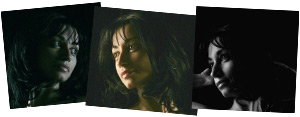(ARTICLE)
This is not about a tattoo to be exposed in a delicate or extravagant place, the first match that would appear if you enter this phrase in your search engine. Neither is it about the inevitable, always implied yin-yang philosophy of the dark-and-light balance of all world creatures and their exchange of energies encompassed by the universe.
It is about a message as old as humanity in the guise of ?masks and the dilemmatic attitudes derived thereof, to guess and to accept with their oxymoronic tendencies: from a remote time to the present day, this message has made its way to the ascertainment of future.
Amazing how just a few words can shape a life, a public or a society, under the cloak of wisdom, as if it were a life-secret aphorism. Yet, where was the wisdom, again?
History
Back in time before Christianity, when love had the same heartbeats, but different emotional mists, the Greeks would bestow their talents, endowments and the expression thereof on two muses, Melpomene and Thalia, the comic and the tragic shapes of art. Thus, joy and sorrow were the emotions of the human condition and the Greek theater would use two masks, made of clay or wood, to best depict these traits: the laughter and the cry. Actors would use them to emphasize the change of emotions, to project the echo of their voices and also to suggest the change of characters, in a time when artistic expressions and claptrap features were reduced to essential means. Back then the celebrations in honor of Dionysius, the god of wine and revelry, were the peak of all events and the two masks referred to the effects of joy and despair that wine would induce on people.
Wine must have been the best sinew of love to imbue hearts with in the emotional crusade. Maybe it is?still.
As time went on, the modest theater turned into great spectacles of splendor in the sumptuous courts of Europe, which included masks in their notorious balls; this time to hide identities and not to show emotional traits. The humbug notes, the anonymity and the licentious outrages led to the King of England banning the masks in the 16th century and proclaiming the wearing of them to be crime or a high misdemeanor.
So much for unrestrained feelings….when love needed morality.
Contemporary
Art. Free style. Symbolism. Oxymoronism and Yin-Yang-ism. Kaleidoscopic tendencies. The laugh now, cry later masks have managed to remain an enchanting enticing present dichotomy.
Although pass? in today?s theaters, the symbols of these two masks have returned to render a personal touch, whether it is about live theater, a singular actor or just a passionate individual. Under the array of the variations in shape and colors, one can find them anywhere printed, labeled or suggested to mark the idiosyncrasy of love, art, life or all of them together.
From Mexico to Japan, Bali or America, cultures still use masks in their ritual and traditional manifestations, religious representations or festivals, to add a dramatic effect to the millenary cultural heritage.
The emotional heartbeats?.garnered in the form of edutainment, with no Bordeaux or Chianti needed.
On an individual level, the laugh now, cry later masks have become a mark for artists or art aficionados, from subtle or pure representations to complicated mystical tattooed symbols of their praising. Without apathetic or iniquitous turnings, they have almost become the fashion-statement of an artistic reminiscence in a complex lifestyle, free to interpretations, from double entendre to bipolarism.
Love?both ambiguous and conspicuous.
Eros or Thanatos?
We’ve seen the masks, we’ve heard the heartbeats. What about the words, what about the purport? Goodbye Picasso, welcome Dali! For it gets more intriguing.
“Laugh now, cry later” can be perceived as an assertion, remark, advice or warning with at least three meanings in one simple read. The most common interpretation of a carefree, fatalist spirit would be “enjoy life while you can, worry about problems later”; like a King Log* sort of world in which rules have no chance to survive in the rationale. Another idealistic, yet semi-determinist view would be “put on a front to the world, you can cry/face your weaknesses at home behind closed doors”. Finally, the warning connotation, with a strong realistic approach marks the conscientious acknowledgement of all dues to pay in life: “if you are careless now, you?ll be sure to pay your dues later”. A bitter touch of life, not for the faint-of-heart.
Yet, the heart is the thespian of all these interpretations, for it?s about joy, as a manifestation of happiness facing its own counterparts, in a conundrum universe where both King Log and King Stork* rule over our minds until we no longer know which side of the saying to take for granted to fit the medal side of truth in ourselves.
In a quagmire of noisy breathings of too much spirits and too many aphorisms, where wisdom still walks in disguise and love is unsure of perdurance beside delusive mimic faces, the better choice is?to free the heartbeats for a truthful rhythm. To subtly veil, yet never feign. To buy up past’s wisdom, yet never sell off future’s feelings. To acknowledge and respect the presence of abyss and to love unconditionally to its utmost brinks, with the most passionate discipline.
For to withstand the nothing, it really takes everything.
But it can also take just one thing: a heartbeat in truth beside you?when the mask has been removed.
(Soar, October 2012, ? www.soaring-words.com. No liability over the picture. Picture credits: irepart.deviantart.com).
(*Note: King Log and King Stork are the kings referred to in the Aesop’s fables, alluding to quietism or an energetic ruling policy.)
 En
En  De
De 

